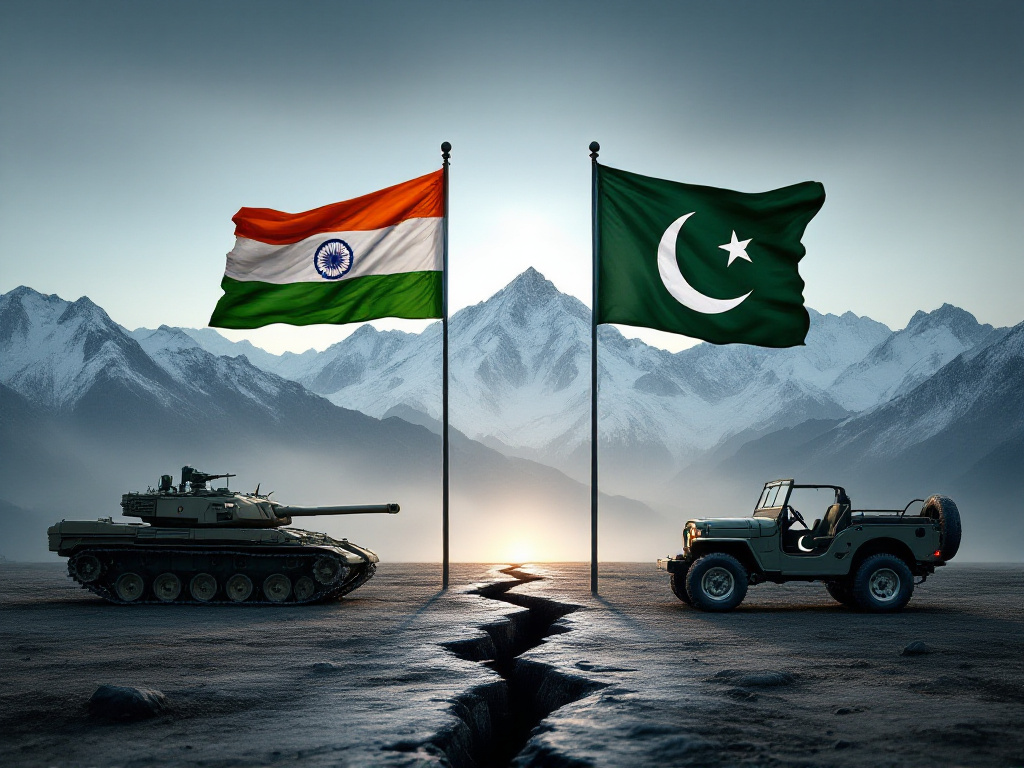Between Ceasefire and Censorship: What Pakistan’s Media Must Learn from the India Crisis
The recent ceasefire agreement between India and Pakistan is a welcome pause in a long and painful pattern of hostilities. While the guns have quieted along the Line of Control, what lingers behind is a deeper, more nuanced battlefield—one shaped by words, perceptions, and information. The role of the media during such times isn’t just to relay bulletins or report from frontlines; it is also to interrogate, reflect, and challenge the narratives we are too quick to accept.
In the brief but intense period of conflict, Pakistan’s media largely earned praise for its measured tone and responsible conduct. Compared to the bombast coming from across the border, local coverage felt grounded. Government officials, ministers, and commentators lauded this maturity. Yet ironically, this very praise raises a red flag.
In classic journalistic tradition, government approval is not typically a badge of honor. When officials cheer the media’s performance, it becomes necessary to ask: was the media simply doing its job—or was it playing along?
The Problem with Approval
In democratic systems, the independence of the press is not just a principle, it is a practical necessity. For the press to act as a counterweight to state narratives, a certain tension must exist. Approval suggests alignment, and alignment, in times of conflict, blurs the essential distinction between state communication and journalistic inquiry.
During this conflict, Indian media took an aggressive, jingoistic stance—amplifying nationalistic sentiment, reporting unverified attacks, and fueling public appetite for confrontation. In contrast, Pakistan’s press was comparatively subdued and careful. But here’s where nuance is needed: restraint is not the same as depth, and silence is not always strategic.
This is where the Pakistani media, despite its composure, may have faltered. There was little critical interrogation, even less diversity of opinion, and almost no engagement with alternative perspectives, especially from across the border. The result was a singular, predictable stream of commentary—calm, yes, but also limited.
Learning from the Other Side
Ironically, a richer diversity of perspectives emerged from India, not through its mainstream “godi media,” but from independent journalists and platforms. Karan Thapar, for example, conducted a remarkable series of interviews featuring voices both Indian and Pakistani. These discussions went beyond blame and noise. They dove into history, policy, military capability, and public perception. And they allowed viewers in both countries to consider the complexity of their neighbor’s position.
The fact that these interviews were well-received in Pakistan speaks volumes. It shows a public appetite for informed debate, even if it challenges national narratives. More importantly, it reveals a gap in our own media landscape. Where is the Pakistani equivalent of The Wire or Scroll.in—outlets that, even under pressure, create space for dissent and rigorous debate?
Our reluctance to broadcast or even host counter-views, especially during tense times, weakens our claim to maturity. A truly confident media doesn’t shy away from dissent; it embraces it, knowing that constructive criticism is a pillar of progress, not a threat to national security.
The Crisis of Platforms
Another dimension to this issue is the shrinking space for free expression online. The ban on X (formerly Twitter) in Pakistan, which persisted for over a year, was not just a technical blockade—it was a symbolic one. It signaled that control of the narrative is valued more than open discussion. Only when external pressure mounted did the government reconsider. And even now, public trust remains low, with users half-expecting another sudden blackout.
This inconsistency damages not only domestic dialogue but also our international credibility. In a global information war—especially one as sensitive as Indo-Pak relations—credibility is currency. Foreign analysts, diplomats, and media houses do not rely on official statements alone. They look for independent media signals to understand the internal discourse of a country. A landscape devoid of these signals suggests suppression, not stability.
The Illusion of Stability
It’s tempting to interpret this recent ceasefire as a turning point. But peace, if it’s to last, must be built on more than military restraint. It requires a cultural shift in how we engage with conflict, dissent, and the role of the press.
If journalists are to be more than mouthpieces, they need the freedom to ask uncomfortable questions. They need platforms that allow them to speak truth to power. And they need an audience willing to listen, even when it’s not easy.
In the past, private gatherings of retired ambassadors and defence analysts were where ideas circulated—terms like S-400 and PL-15 were debated, and strategic thinking evolved quietly behind the scenes. Now, the world is watching us in real time. The war of ideas is as public as any other battlefield. And in this space, state-sanctioned praise is no substitute for hard-earned trust.
The Way Forward
This ceasefire should serve as more than a breather from conflict. It must also be a mirror—reflecting both the strengths and shortcomings of our information systems.
Pakistan’s media, for all its recent composure, must ask hard questions. Can we foster independent platforms that explore the broader regional implications of conflict? Can we create space for dissenting voices, including those from India, not to endorse them but to understand the conversation across the border? Can we maintain our credibility without needing a crisis to remind us of its value?
Because when the next flashpoint comes—and history suggests it will—the stories we tell, the voices we platform, and the truths we choose to pursue will shape not just public opinion, but international understanding.
Peace on the ground is fragile. But peace of the mind—shaped by honest media and open debate—is what endures.
And that kind of peace is worth investing in.
